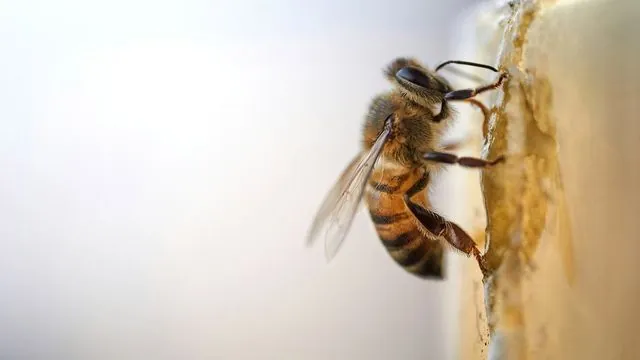
Surprising Findings: Honey Bees Have Minimal Impact on Maryland's Native Bee Populations!
2024-11-13
Author: Mei
A groundbreaking study from Penn State has unveiled crucial insights into the relationship between managed honey bees and native bee species in Maryland.
Researchers aimed to investigate whether honey bees compete with wild bees for resources or transmit harmful pathogens, and their extensive analysis across 33 genera of native bees reveals that the influence of honey bee populations is not as detrimental as previously thought.
Diving Into the Data: What Researchers Found
The research team meticulously evaluated data from nearly 4,000 apiaries throughout Maryland and mapped it against corresponding wild bee populations documented by the U.S. Geological Survey’s Bee Monitoring and Identification Lab.
The study uncovered that while honey bee presence and urbanization are correlated with declines in a few native bee genera, only six specific groups were notably affected: Svastra, Florilegus, Agapostemon, Augochlora, Lasioglossum, and Melissodes.
Among these, Svastra long-horned bees were particularly impacted, exhibiting significant population decreases in regions with a high density of apiaries. Meanwhile, the decline of Florilegus bees was predominantly observed in urban areas, underscoring the potential role of urbanization over honey bee presence.
The Vulnerable Bees: Why Are They at Risk?
Analysis revealed that the native bee species most vulnerable to disruptions are those that nest in the ground, forage later in the season, and rely on specific plant types for sustenance.
These characteristics expose them to heightened competition with honey bees during peak colony growth when floral resources are scarce. Additionally, urbanized landscapes hinder ground-nesting bees by limiting access to essential nesting habitats like bare soil, which is often paved over by concrete and asphalt.
What Does This Mean for Conservation?
The implications of these findings underscore the importance of tailored conservation initiatives aimed at protecting vulnerable native bee species.
By managing urban green spaces to include bare ground for nesting and a diverse array of flowering plants that bloom later in the season, we can alleviate competition from honey bees and promote a healthier ecosystem for native pollinators.
Looking Ahead: Future Research Directions
While the research presents vital conclusions specific to Maryland, it sets the stage for further studies across different regions of the United States.
Penn State's innovative INSECT NET program is already gearing up to develop non-invasive monitoring tools, paving the way for more targeted conservation strategies that consider the specific needs of diverse bee species and their responses to the pressures exerted by urbanization and managed honey bee populations.
This study not only enhances our understanding of bee ecology but also highlights the urgent need for conservation efforts to protect our natural pollinators.
As urban areas continue to expand, how we shape our green spaces could determine the survival of these essential species—an ecosystem at stake that demands our attention!


 Brasil (PT)
Brasil (PT)
 Canada (EN)
Canada (EN)
 Chile (ES)
Chile (ES)
 España (ES)
España (ES)
 France (FR)
France (FR)
 Hong Kong (EN)
Hong Kong (EN)
 Italia (IT)
Italia (IT)
 日本 (JA)
日本 (JA)
 Magyarország (HU)
Magyarország (HU)
 Norge (NO)
Norge (NO)
 Polska (PL)
Polska (PL)
 Schweiz (DE)
Schweiz (DE)
 Singapore (EN)
Singapore (EN)
 Sverige (SV)
Sverige (SV)
 Suomi (FI)
Suomi (FI)
 Türkiye (TR)
Türkiye (TR)